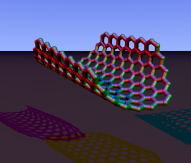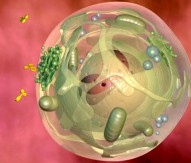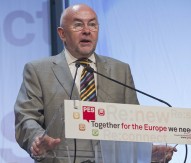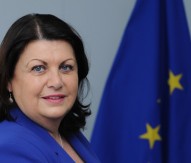
Is Horizon 2020 safely funding nanotechnology?
The European Commission’s ERA-NET scheme promotes and funds closer collaboration between different funding organisations (e.g. national ministries and regional agencies) working across several EU member states and associated countries. The scheme encourages closer co-operation through the joint preparation and implementation of transnational calls, leading to the networking of research activities and sharing of research programmes at a national level.
The FP7 ERA-Net on nanosafety, ‘Safe Implementation of Innovative Nanoscience and Nanotechnology’ (SIINN ERA-NET), began in August 2012 and is due to run until July 2014. The project is a collaboration of 19 partners from 14 European and associated countries, and is part-funded by the Commission.
Dr Rainer Hagenbeck, representing the German project management agency Jülich, is the co-ordinator of SIINN ERA-NET, and began by explaining the background to the project.
The risks and safety issues relating to nanotechnology and nanoscience are becoming an increasing concern, and this is the focus of SIINN ERA-NET. I think the intention of the Commission was that it could not fund all these research and innovation activities on a European level with a single framework programme.
The SIINN ERA-NET prepares and implements a number of joint transnational calls. There are many national programmes in Europe on nanosafety and SIINN ERA-NET is hoping to implement a kind of co-operation between these various schemes and to bring together these national funding activities.
After we submitted our first joint call in 2012, three projects were selected for funding and these include ‘assessment of individual exposure to manufactured nanomaterials by means of personal monitors and samplers’, ‘assessment of the use of particle reactivity metrics as an indicator for pathogenic properties and predictor of potential toxicological hazard’ and ‘fate of engineered nanoparticles in the water column under natural conditions’. We are currently preparing the second transnational call, which will be published later this month.
How important is international collaboration to your project?
International collaboration is essential. The risks of nanomaterials and nanotechnology are not limited to a certain region or country. It is a global challenge. It’s important to have cross-border regulations to handle these products and it’s therefore the intention of the Commission to harmonise activities across member states with a European framework for the handling of nanomaterials and nanotechnology.
To what extent do you welcome the changes introduced in Horizon 2020?
I certainly welcome the intention of the Commission to increase funding for research projects resulting from Joint Programming Initiatives under Horizon 2020 (e.g. ERA-NET), yet I envisage a major funding issue that could affect the willingness of funding agencies to participate in future ERA-NET activities.
The new structure of the ERA-NET is to merge the old ERA-NET instrument and the ERA-NET Plus instrument. This itself wouldn’t be so critical, but the Commission is also intending to significantly reduce the funding of networks of national ministries and funding agencies to only top fund individual calls for transnational research and innovation in selected areas, which could be problematic. This means if funding agencies are collecting their budget for funding research projects, the Commission would like to add top funding to this, and this is the same as we had in the ERA-NET Plus instrument. This is intended to become mandatory for one call of the new funding instrument under Horizon 2020.
SIINN ERA-NET is funded by the Commission for a three-year period, with a contribution of €1.5m, and under Horizon 2020 our funding will reduce. For example, if the funding agencies were to collect €66m for one joint call, the Commission would provide an additional 30%, providing us with a total of €100m for all research projects for one call. Furthermore, the Commission would give an additional funding of 5% that could be used for networking activities between the funding organisations, including the preparation and implementation of one or more calls. However, for most of the past and present ERA-NETs, the collection of such a huge amount of budget per call is not realistic. This means that the additional Commission funding for networking and call preparation would be much lower.
As an example, for our next call we have now collected €4.5m. Now, if we were in Horizon 2020, we would receive one-third of top funding from the Commission, and would end up with €6m for the overall budget of the call and 5% Commission funding for the networking activities, which is €300,000. This amount would be the overall funding for the whole period of the project and for all funding agencies. This is much too low, and we will not be able to participate in such future activities with such a low contribution from the Commission. This change is critical for us. We have already had discussions with the German Federal Ministry for Education and Research and they are saying very clearly that they will not be able to fill the funding gap left by the Commission.
On the one hand, I am welcoming the plans of the Commission because they would like to add funding to the research projects, but on the other hand they would like to reduce funding of the networks and they are expecting the ERA-NET member states to fill the gap.
How are you looking to expand the project in the future?
Following internal discussions, many of our partners are interested in continuing the activities with a follow-up to SIINN ERA-NET. We have also discussed this with the Commission and they seem keen to keep the activities alive. However, before this can finally be decided, the potential funding gap for co-operation between the funding agencies needs to be reduced.
The focus for our next call will be to cover the overarching effects of nanosafety research and to understand the effects of nanomaterials on human health and the environment. We are intending to publish the call in the second half of June and it will be open until the end of October. Six of our 19 partners will participate, including Germany, Austria, Portugal, Romania, Israel and the Wallonia Region in Belgium.
Dr Rainer Hagenbeck




